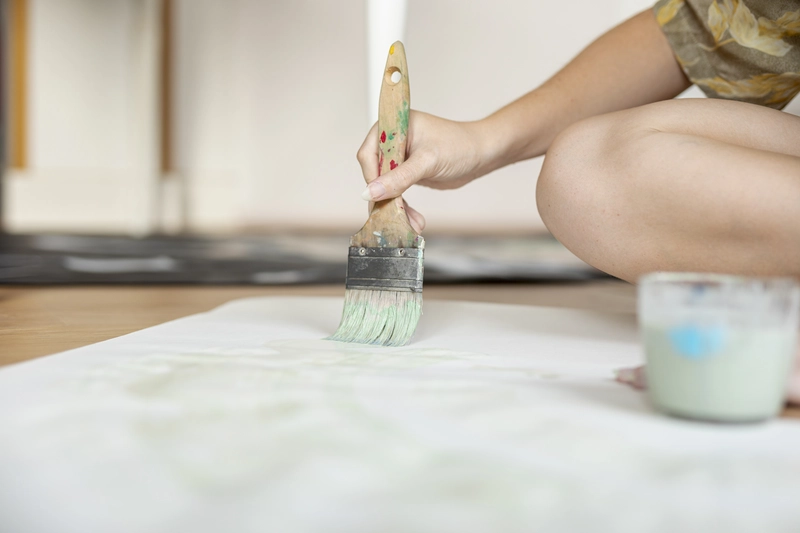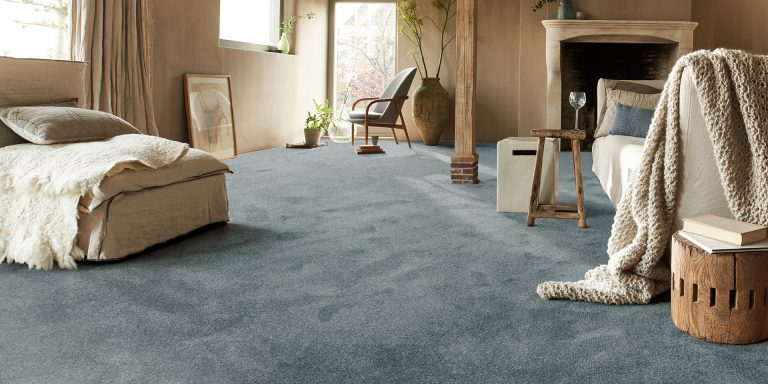Dealing with a paint spill on your carpet can be a stressful situation, but fear not! With the right tools and techniques, you can successfully remove the stubborn stain.
We will discuss the essential tools you need, the different types of paint you may be dealing with, and the step-by-step process on how to get paint out of carpet. Learn how to tackle this common household dilemma and restore your carpet to its former glory.
How to Get Paint Out of Carpet
Removing paint from a carpet can be a daunting task, but with the right tools and techniques, you can effectively tackle both fresh and dried paint stains. According to the experts, knowing the type of paint and acting quickly are crucial steps in the paint stain removal process.
The Tools Needed to Get Paint Out of Carpet
To get paint out of carpet, you’ll need a set of essential tools as recommended by cleaning experts, including kitchen roll, washing-up liquid, and more.
1. Paper Towels
A kitchen roll is crucial for dabbing fresh paint stains on a carpet to prevent the paint from spreading.
When you notice a paint spill on your carpet, it’s important to act quickly. The first step is to grab a few sheets of kitchen roll and gently place them over the wet paint. Do not rub the paint as this could worsen the situation by pushing the paint deeper into the carpet fibres. Dabbing is the key technique here – gently press down on the paint stain with the kitchen roll to soak up as much paint as possible.
2. Dish Soap
Washing-up liquid is an essential component in creating a cleaning solution that can break down paint stains on carpet fibres.
To effectively mix washing-up liquid with water, you’ll want to start by filling a bucket or spray bottle with warm water. Once you have the water ready, add a few drops of washing-up liquid into the water and gently swirl it around to ensure it is evenly distributed. This homemade solution works wonders in breaking down tough paint stains on carpets or upholstery.
3. Warm Water
Warm water enhances the effectiveness of cleaning solutions when dealing with paint stains on carpet.
Paint stains can be particularly stubborn to remove, but when warm water is introduced, it helps to break down the paint particles and loosen them from the carpet fibres. The heat from the warm water accelerates the chemical reactions in the cleaning solution, making it more potent in dissolving the paint.
The warmth of the water aids in softening the paint, making it easier to lift off the carpet surface without causing damage. This gentle yet efficient method is especially useful for delicate carpet fibres, as it minimises the risk of abrasion or colour fading.
4. Scrub Brush
A scrubbing brush is useful for agitating and loosening dried paint stains from carpet fibres.
When using a scrubbing brush on paint stains, it’s crucial to remember to work gently and with care. First, blot any excess paint with a clean cloth to prevent spreading the stain further. Then, dampen the stained area with water or a mixture of water and mild soap to soften the paint.
Using a soft-bristled scrubbing brush, in a circular motion, gently agitate the paint stain without pushing too hard to avoid damaging the carpet fibres.
Rinse the area thoroughly with clean water to remove any loosened paint particles. Repeat the process if necessary, but always test a small inconspicuous area of the carpet beforehand to ensure the scrubbing brush doesn’t cause any damage.
5. Rubbing Alcohol
Surgical alcohol, specifically isopropyl alcohol, can be effective in breaking down paint stains on carpet.
When applying surgical spirit to a carpet stain, first pour a small amount onto a clean cloth or cotton ball.
Gently dab the affected area, making sure not to rub vigorously as it can damage the carpet fibres.
It is advisable to perform a patch test in an inconspicuous area to ensure the alcohol doesn’t affect the carpet’s colour or texture.
After applying, allow the alcohol to sit for a few minutes before blotting it up with a clean, dry cloth or kitchen towel.
6. Paint Thinner
Paint thinner is particularly effective for removing stubborn oil-based paint stains from carpet fibres.
When using white spirit to clean a paint stain from a carpet, it is crucial to work in a well-ventilated area to avoid inhaling fumes. Always wear protective gloves and a mask to shield your skin and respiratory system from potential irritants. Before applying the white spirit, test it on a small inconspicuous area of the carpet to ensure it does not cause any damage or discolouration.
When applying the white spirit, use a cloth to blot the stained area gently, being careful not to oversaturate the carpet. Blotting helps lift the paint from the fibres without spreading it further. After the stain has been lifted, rinse the area thoroughly with water to remove any remaining white spirit residue.
The Type of Paint that Can Dry on Carpet
Identifying the type of paint you’re dealing with is crucial, as emulsion paint, oil-based paint, and acrylic paint each require different cleaning approaches to remove stains from carpet.
Latex Paint
Emulsion paint, a common water-based paint, can often be removed from a carpet using a simple cleaning solution and warm water.
When dealing with a fresh emulsion paint spill on the carpet, it’s important to act quickly. Begin by blotting up as much of the paint as possible using a clean cloth or paper towel. Avoid rubbing the spill as it can spread the paint further into the fibres. Once the excess paint is blotted, mix a solution of warm water and a mild detergent to create a cleaning solution.
Gently dab the cleaning solution onto the affected area, allowing it to penetrate the paint without soaking the carpet excessively. Continue this process until the paint begins to lift from the carpet fibres.
If needed, you can also use a soft-bristle brush to gently agitate the paint stain without damaging the carpet fibres. Rinse the area thoroughly with clean water and blot dry with a clean towel. Repeat these steps as necessary until the emulsion paint is completely removed from the carpet.
Oil-based Paint
Removing oil-based paint from a carpet can be a challenging task, but with the right approach, it is possible to restore your carpet to its original state. First, if the paint is still wet, use paper towels or a clean cloth to blot up as much of the paint as possible. It’s important to avoid rubbing, as this can push the paint deeper into the carpet fibres. For dried paint, gently scrape off as much as you can with a knife or spoon, being careful not to damage the carpet.
Before applying any chemicals, test a small, inconspicuous area of the carpet to ensure that it doesn’t cause discolouration or damage. Once you’re confident it’s safe, dampen a clean cloth with paint thinner or mineral spirits and gently blot the stained area. Avoid pouring the thinner directly onto the carpet, as this can damage the backing. Continue blotting with the cloth, switching to clean sections as needed, until the paint starts to transfer from the carpet to the cloth.
After most of the paint has been removed, mix a few drops of mild dish soap with warm water. Use a soft-bristled brush to gently scrub the stained area. Follow this by dampening another clean cloth with warm water and blotting the area to rinse out the soap. To dry the carpet, blot the area with a dry cloth to absorb excess moisture. Placing a fan nearby can help speed up the drying process. Once the carpet is completely dry, vacuum the area to restore its texture.
Acting quickly is crucial, as the sooner you address the stain, the easier it will be to remove. Ensure good ventilation in the room when using paint thinner or mineral spirits. Removing oil-based paint may take several attempts, so patience and persistence are key. If the stain persists or if you are unsure about using these chemicals, consider contacting a professional carpet cleaner for assistance.
How to Get Paint Out of Carpet
How to get dried paint out of carpet? Following a structured set of steps to remove paint stains from a carpet can make the cleaning process more effective.
1. Blot the Paint Stain
Blotting the paint stain immediately with a kitchen roll is the first crucial step in preventing the paint from setting into the carpet fibres.
By gently pressing the kitchen roll onto the stain, you can absorb as much of the paint as possible before it has a chance to penetrate deeper. Avoid rubbing the stain, as this can spread the paint further.
After blotting, use a clean section of the kitchen roll or a new one to continue absorbing the paint until minimal transfer occurs. This repeated blotting process helps lift the paint from the carpet fibres.
2. Mix a Cleaning Solution
Creating a cleaning solution with washing-up liquid and warm water helps in breaking down the paint stain on the carpet.
To make the solution, mix one tablespoon of washing-up liquid with two cups of warm water in a container. Stir the mixture gently to ensure the soap is fully dissolved. The warmth of the water aids in loosening the paint from the carpet fibres, making it easier to clean. Remember not to use hot water as it can set the stain further into the carpet.
3. Test the Solution on a Small Area
Before applying the cleaning solution to the entire stain, it’s vital to test it on a small, inconspicuous area of the carpet to ensure it doesn’t cause any damage.
Testing the cleaning solution on a hidden area prevents any potential disasters that could arise from applying a substance that is too harsh. This simple precaution can save you from ending up with a more extensive stain or damage that is harder to rectify.
Before application, mix the cleaning solution according to the manufacturer’s instructions. It’s essential to follow the suggested dilution ratios for effective and safe usage. Apply a small amount of the diluted solution on the inconspicuous spot using a clean cloth or sponge. Wait for a few minutes to observe any adverse reactions such as discolouration, fading, or damage to the carpet fibres. If there are no negative effects, proceed with confidence to treat the main stain with the tested solution.
4. Apply the Solution to the Stain
Once you’ve confirmed the solution is safe for your carpet, apply it directly to the paint stain and allow it to sit for a few minutes.
During this time, the solution will work its magic, breaking down the paint particles and loosening their grip on the fibres of the carpet. Be patient and give it ample time to penetrate the stain completely. For tougher stains, you may want to gently dab or blot the area with a clean cloth to help the solution reach deeper into the carpet fibres. Remember, every minute counts when dealing with stains, so avoid rushing the process for optimal results.
5. Blot the Stain Again
After allowing the cleaning solution to work, dab the stain again using a clean, white cloth to lift the paint from the carpet fibres.
Dabbing is a crucial step in the stain removal process as it helps absorb the loosened paint particles. By gently pressing the white cloth onto the stained area, you can gradually lift the paint without spreading it further.
Using a white cloth is recommended because it allows you to monitor the colour transfer from the carpet to the cloth easily. This way, you can gauge the effectiveness of the stain removal technique and avoid potential discolouration of the carpet fibres.
6. Rinse and Repeat if Necessary
Rinse the treated area with warm water to remove any remaining cleaning solution, and repeat the process if the paint stain persists.
After ensuring you have thoroughly rinsed the area with warm water and no cleaning solution remains visible, it’s crucial to inspect the spot again. If any traces of the paint stain are still present, it’s advisable to repeat the entire process to ensure complete removal. Consistency and patience are key in tackling stubborn stains like paint, as multiple applications may be needed for optimal results.
7. Use Rubbing Alcohol or Paint Thinner for Stubborn Stains
For particularly stubborn paint stains, using rubbing alcohol or paint thinner can be effective, but always wear nitrile gloves to protect your hands.
When applying rubbing alcohol, soak a clean cloth with the solution and gently dab at the stain, allowing it to sit for a few minutes before wiping away. For paint thinner, use a brush or rag to apply a small amount directly to the stain, then let it sit as recommended by the product instructions.
Ensure proper ventilation when using these stronger solvents to prevent inhalation of fumes Dispose of used clothes or materials properly to avoid fire hazards. Keep these substances out of reach of children and pets
What If the Stain Doesn’t Come Out
If after multiple attempts the paint stain still doesn’t come out, it may be time to consider alternatives such as calling a professional carpet cleaner like COIT or even replacing the carpet.
Call a Professional Carpet Cleaner
One of the best ways to paint out of carpet is using professional carpet cleaners like TEKA Cleaning. It has specialised tools and expertise to handle stubborn paint stains that household methods might not resolve.
When you hire a professional cleaner, you can expect top-notch service that goes beyond just tackling visible stains. These experts have the knowledge to identify the type of carpet material and the most suitable cleaning methods to avoid damage. They use high-quality cleaning products that are gentle on your carpets but tough on stains.
Professional cleaners also possess powerful equipment that can extract dirt and allergens deep within the carpet fibres, resulting in a cleaner and healthier environment for you and your family. Their methods are not only effective but also efficient, saving you time and effort in the long run.
Consider Replacing the Carpet
In cases where the paint stain is too severe and all cleaning methods have failed, replacing the carpet might be the best option.
When considering the decision to replace the carpet, it’s crucial to factor in various elements that will impact the outcome.
- Cost: Budget plays a significant role in determining whether a carpet replacement is feasible. Assessing the expenses involved in purchasing new carpeting, installation charges, and any additional costs is vital.
- Practicality: Analysing the practicality of replacing the carpet involves evaluating the durability, maintenance requirements, and overall functionality of different carpet options.
Taking these factors into account can help in making an informed decision tailored to your needs and preferences.

See product: Cormar Carpet Natural Berber Twist Deluxe Saxon Stone
At TEKA Flooring, we provide a premium selection of carpet brands to handle everyday challenges, including accidental paint spills. Our high-quality carpet is designed for durability, easy maintenance, and an exceptional appearance.
Don’t let dried paint damage your surfaces or affect your mood. Switch to TEKA Flooring’s top-quality carpet and notice the difference. Visit our store or website to browse our wide range and find the ideal carpet for your needs!
Read also:

































